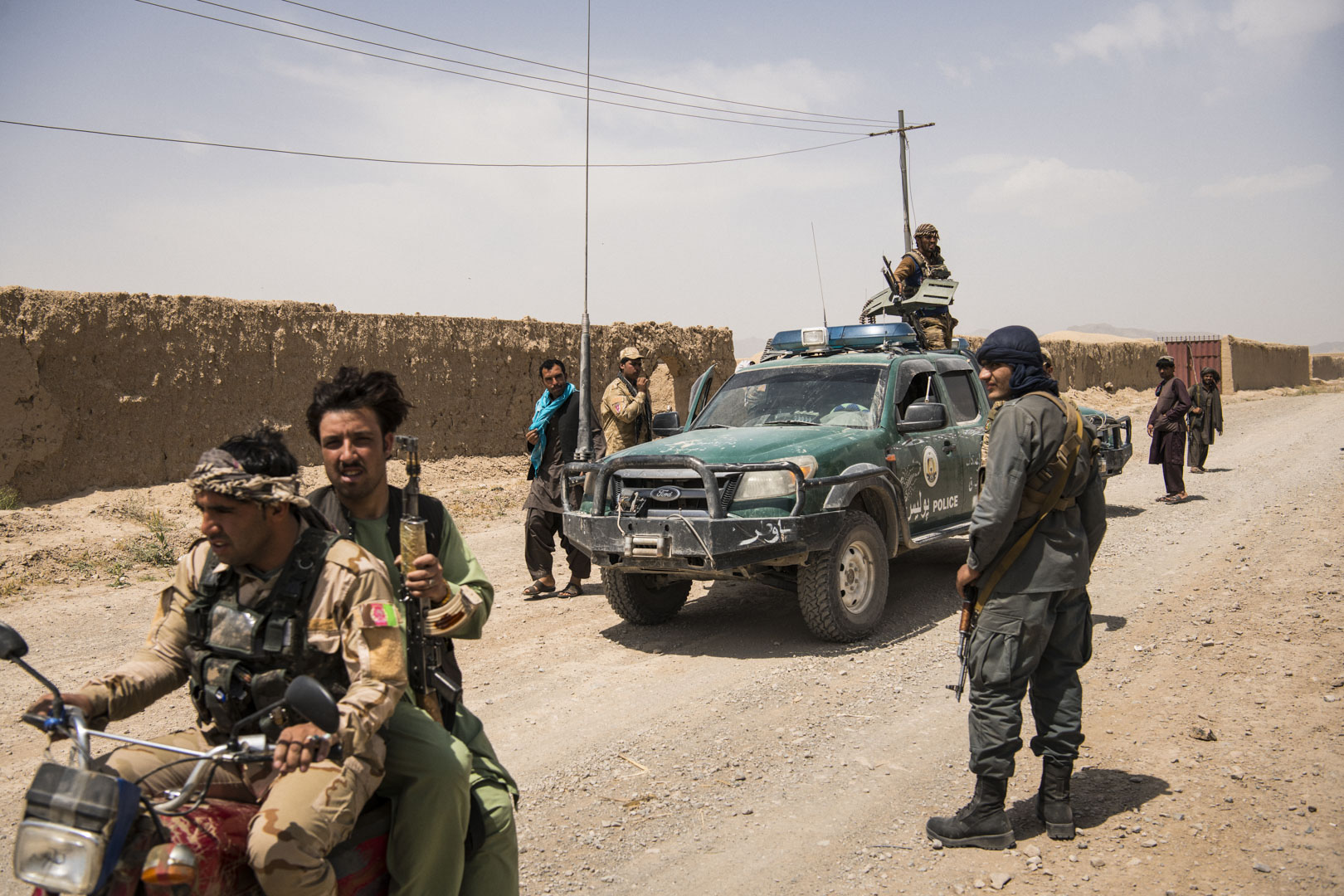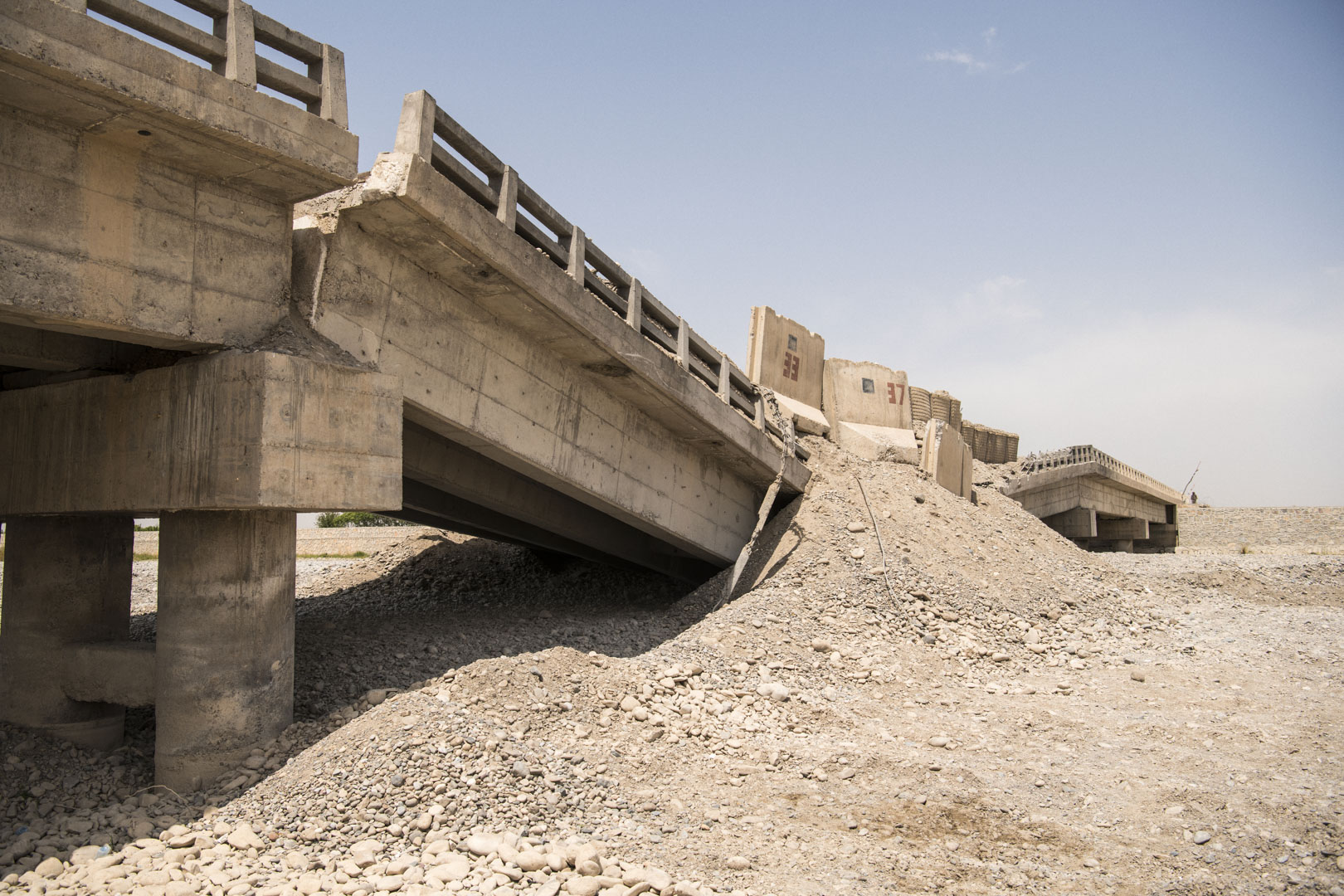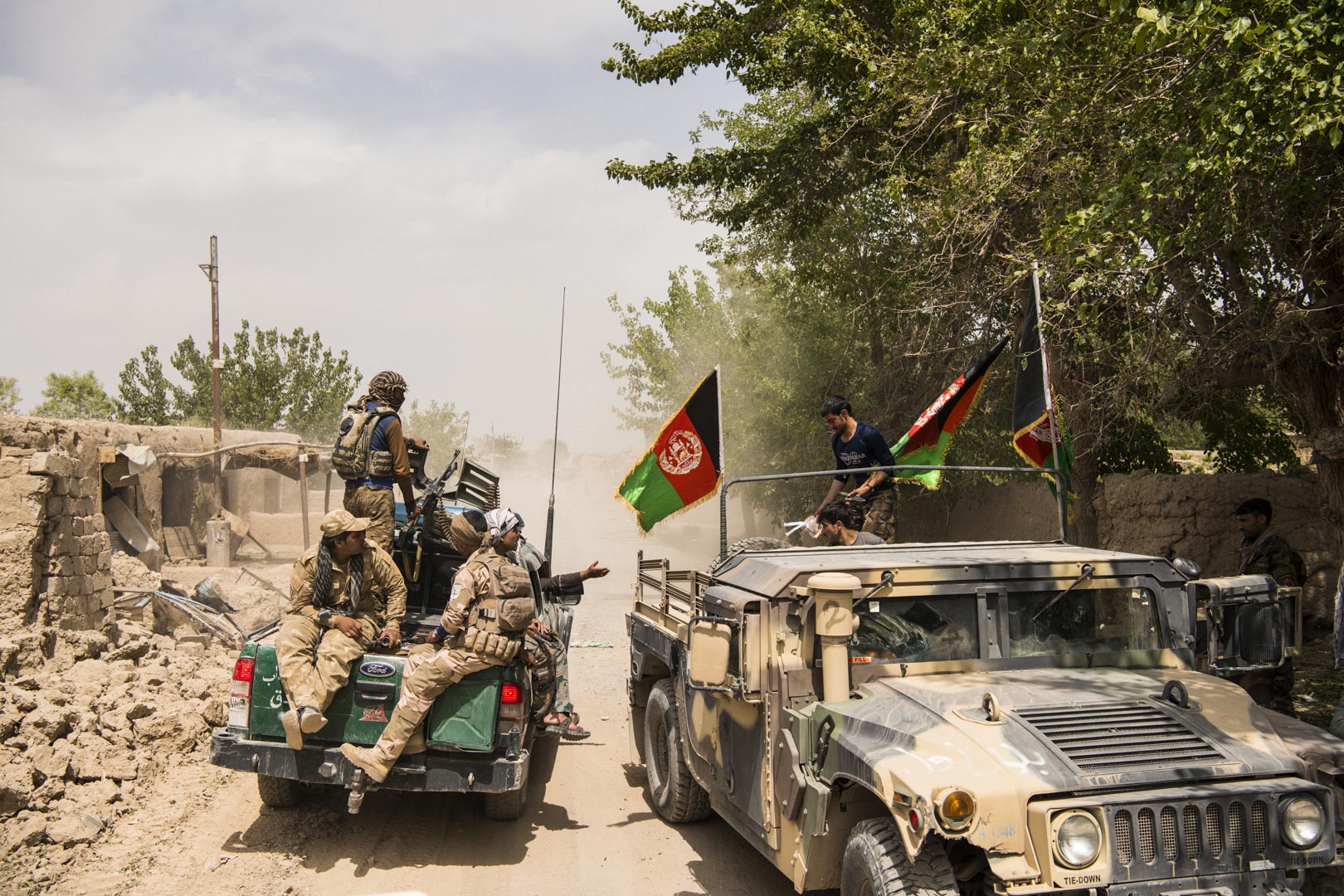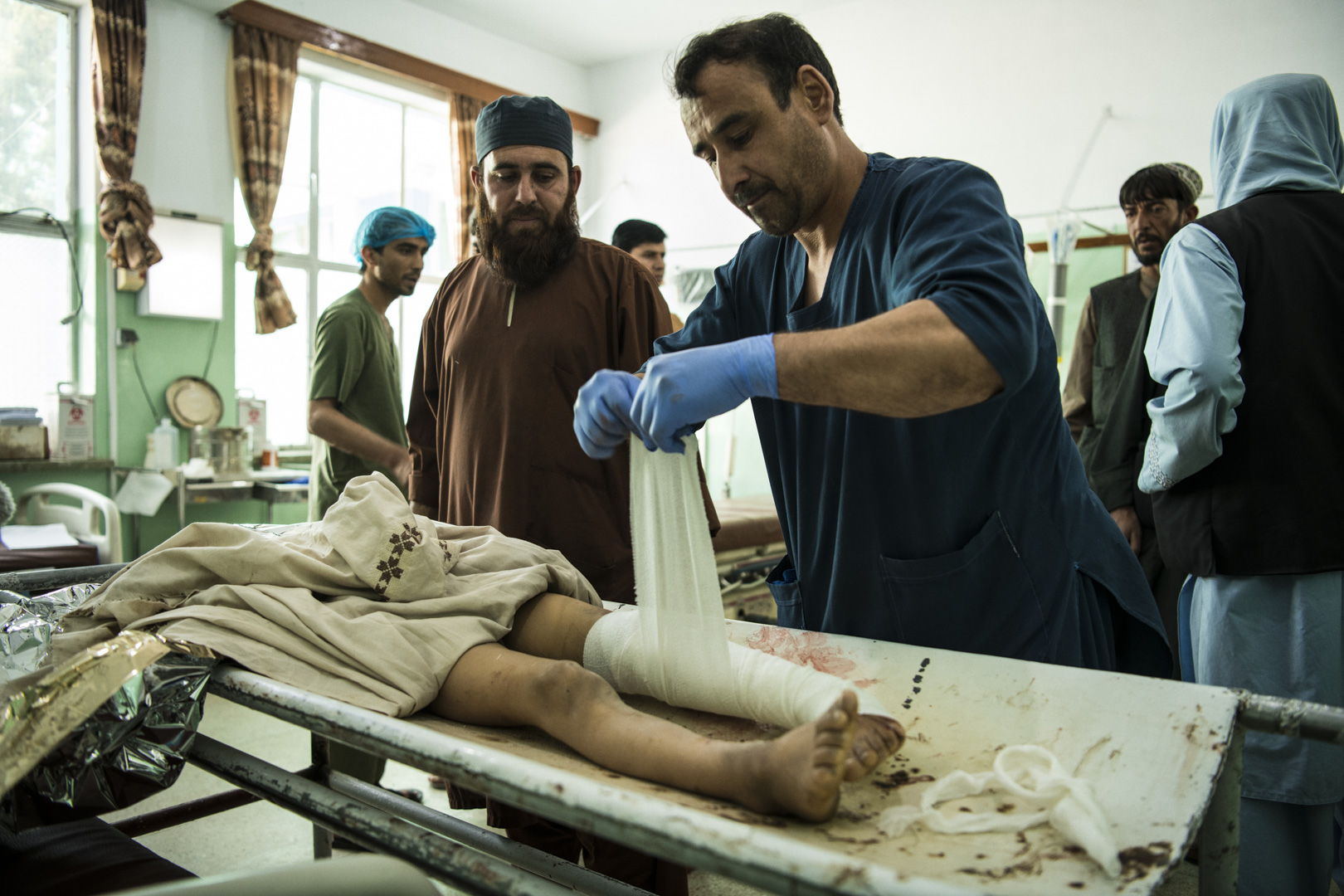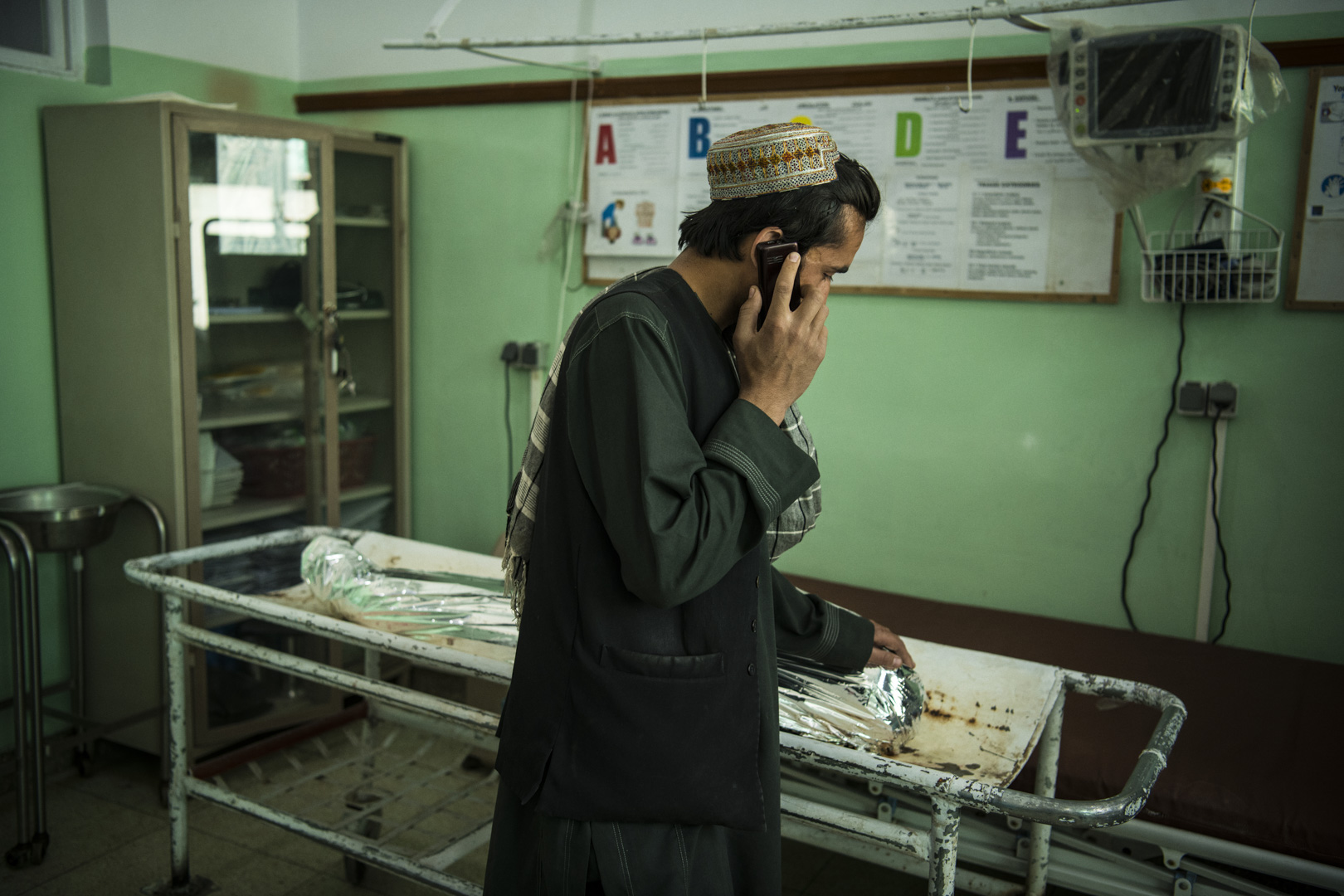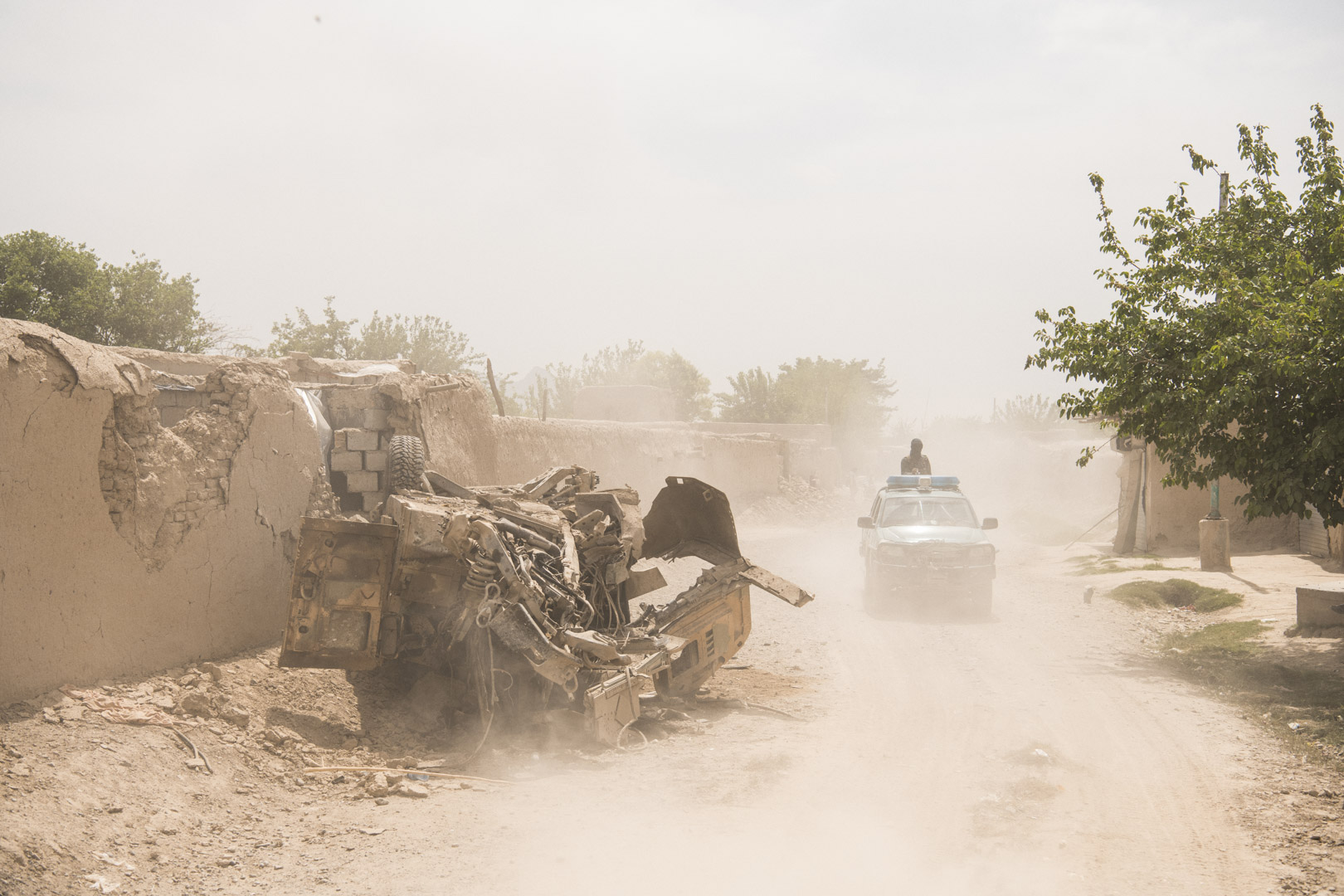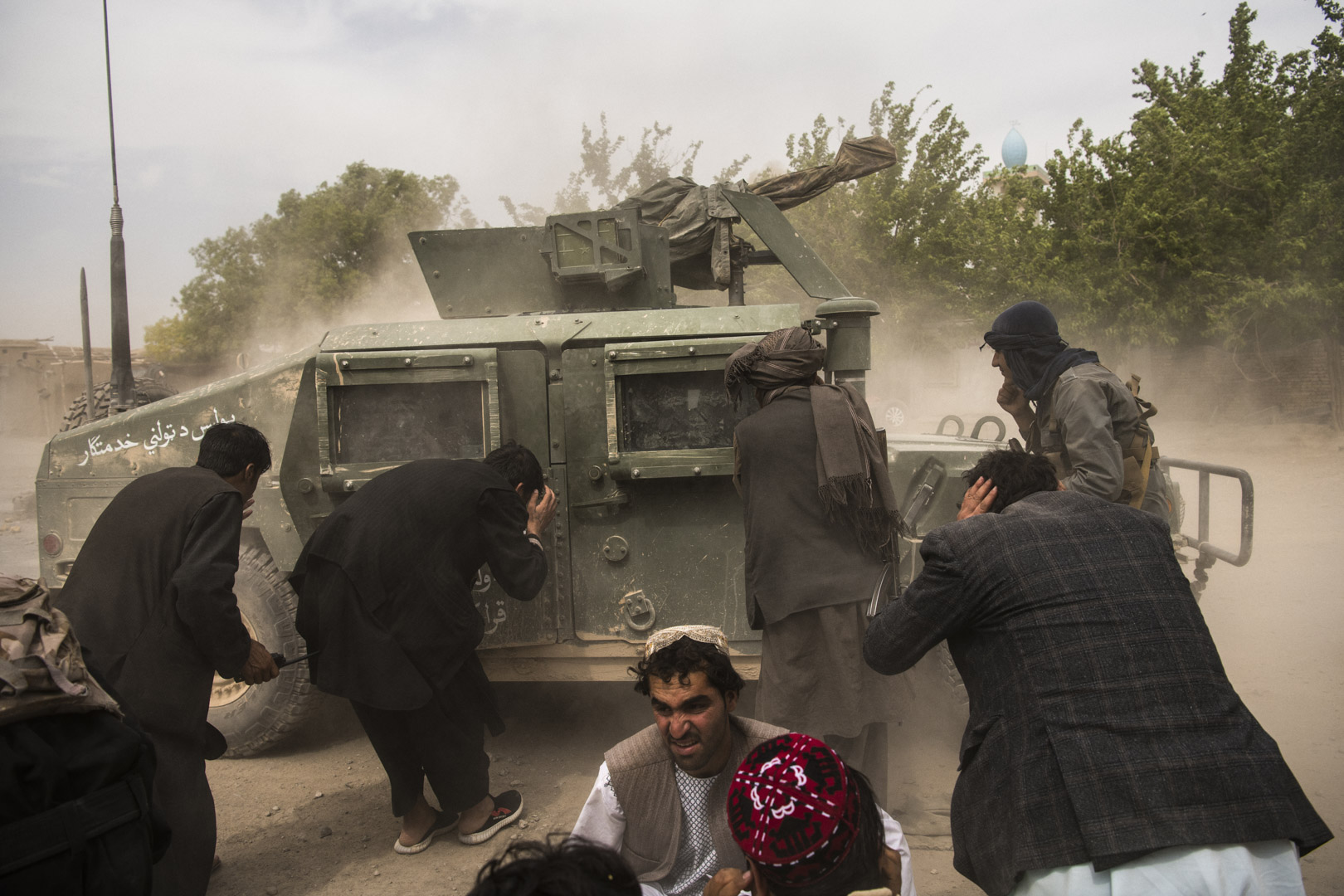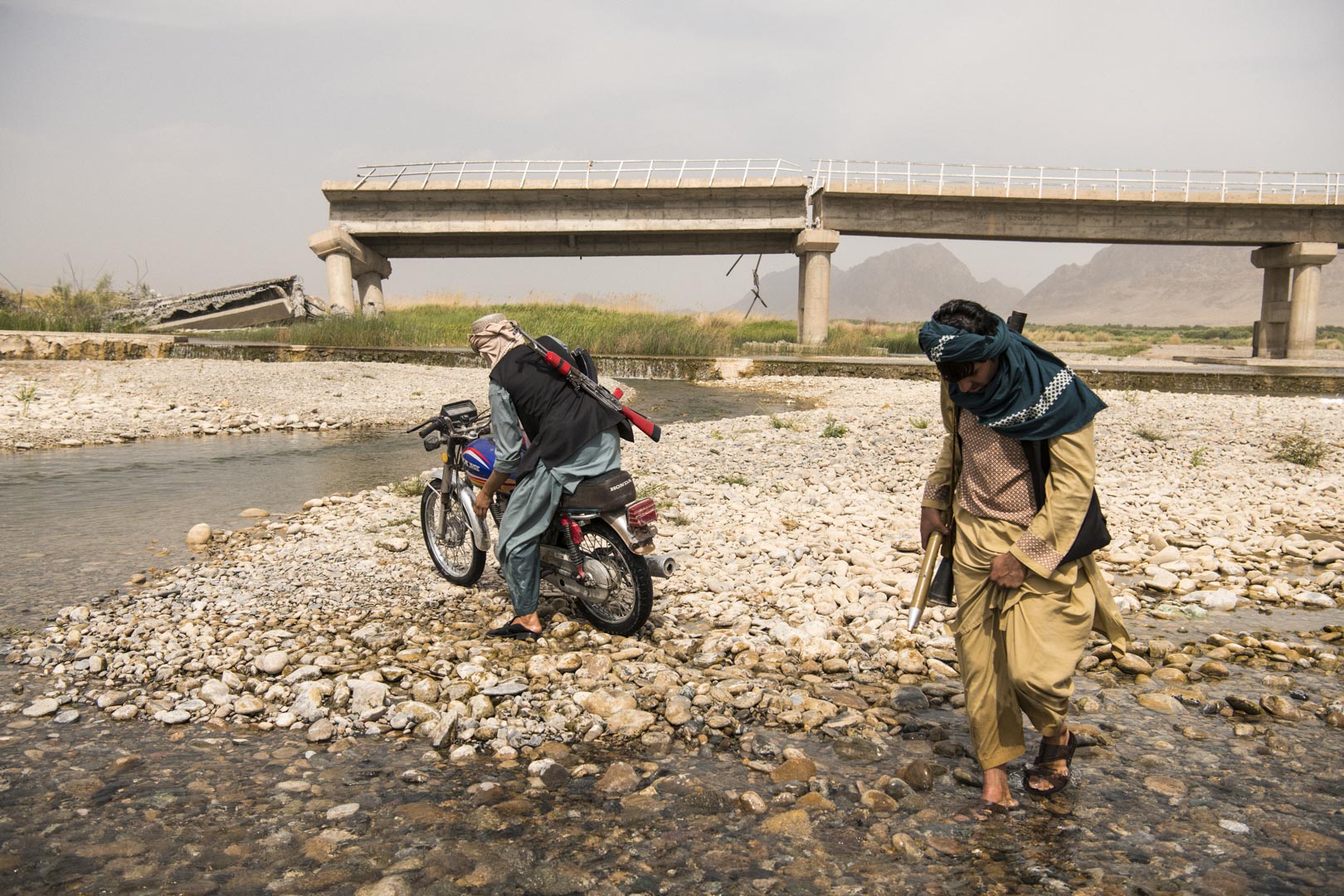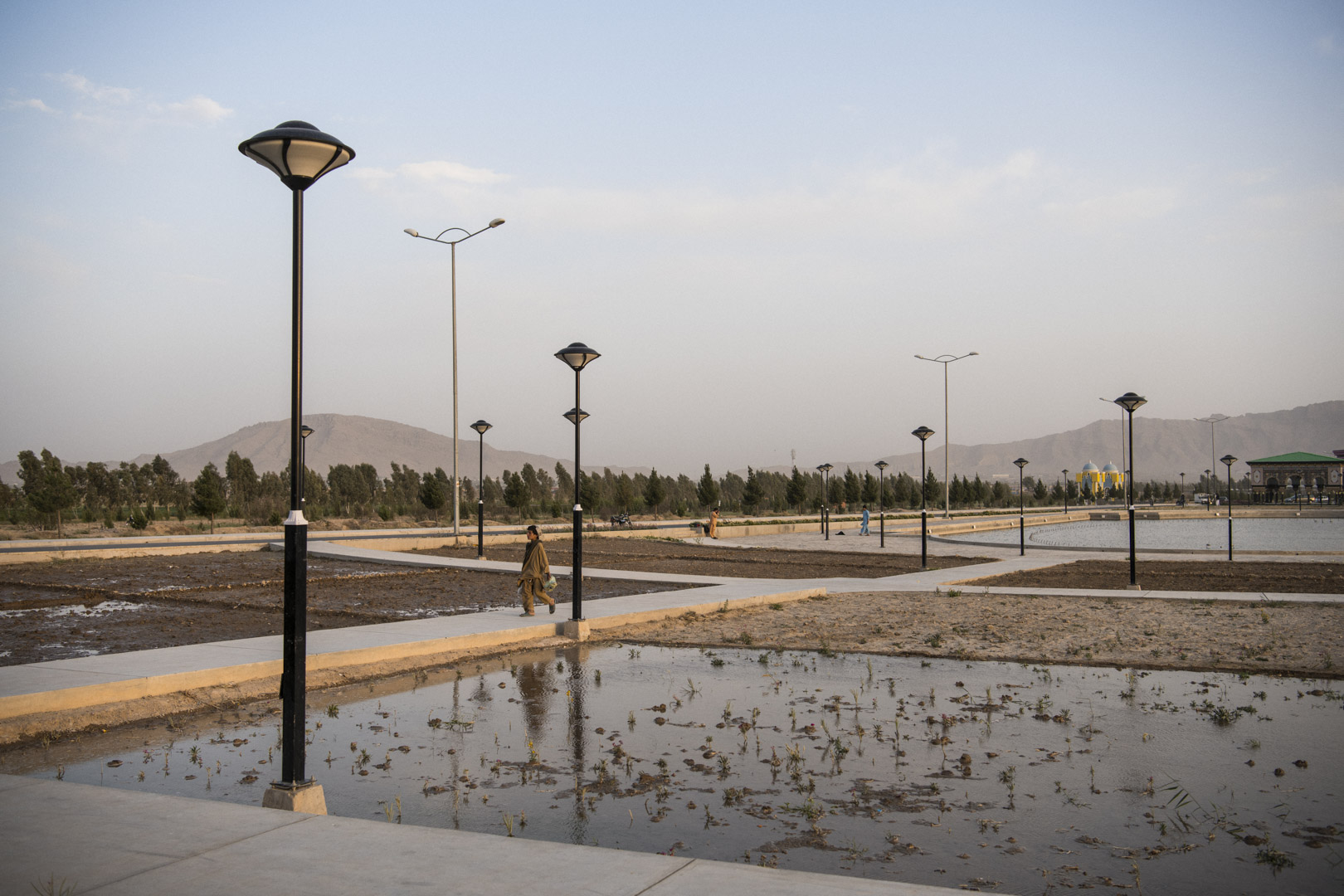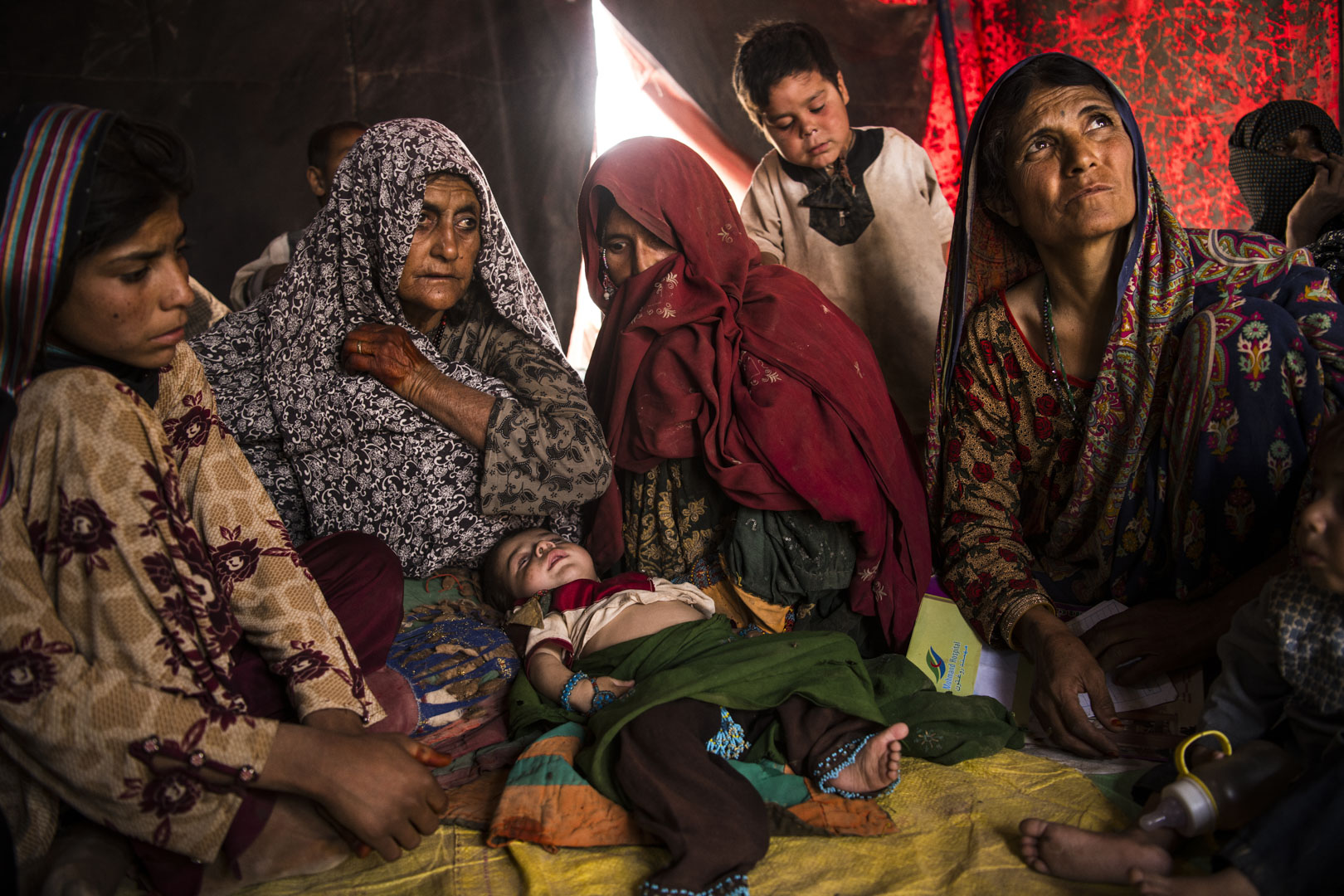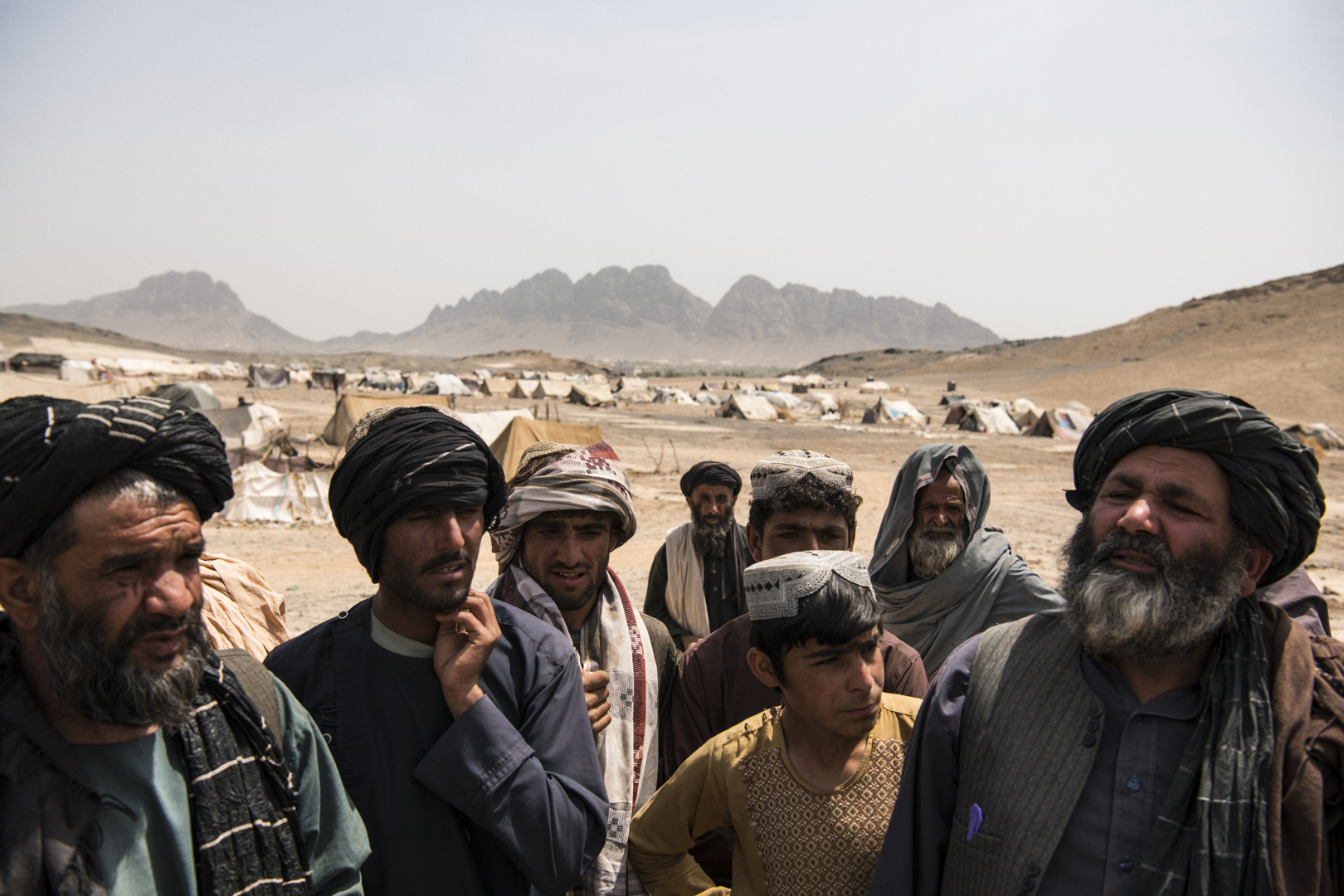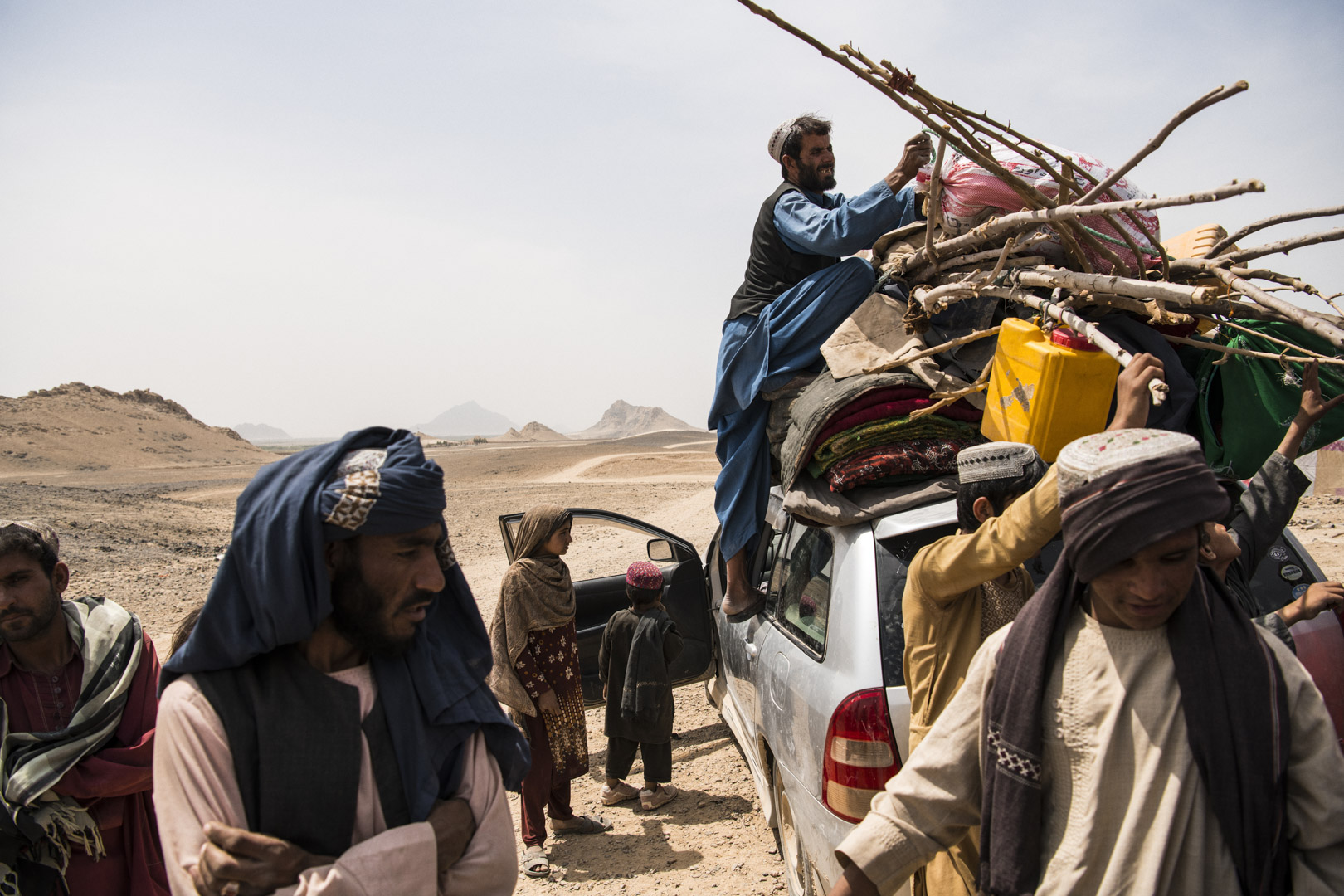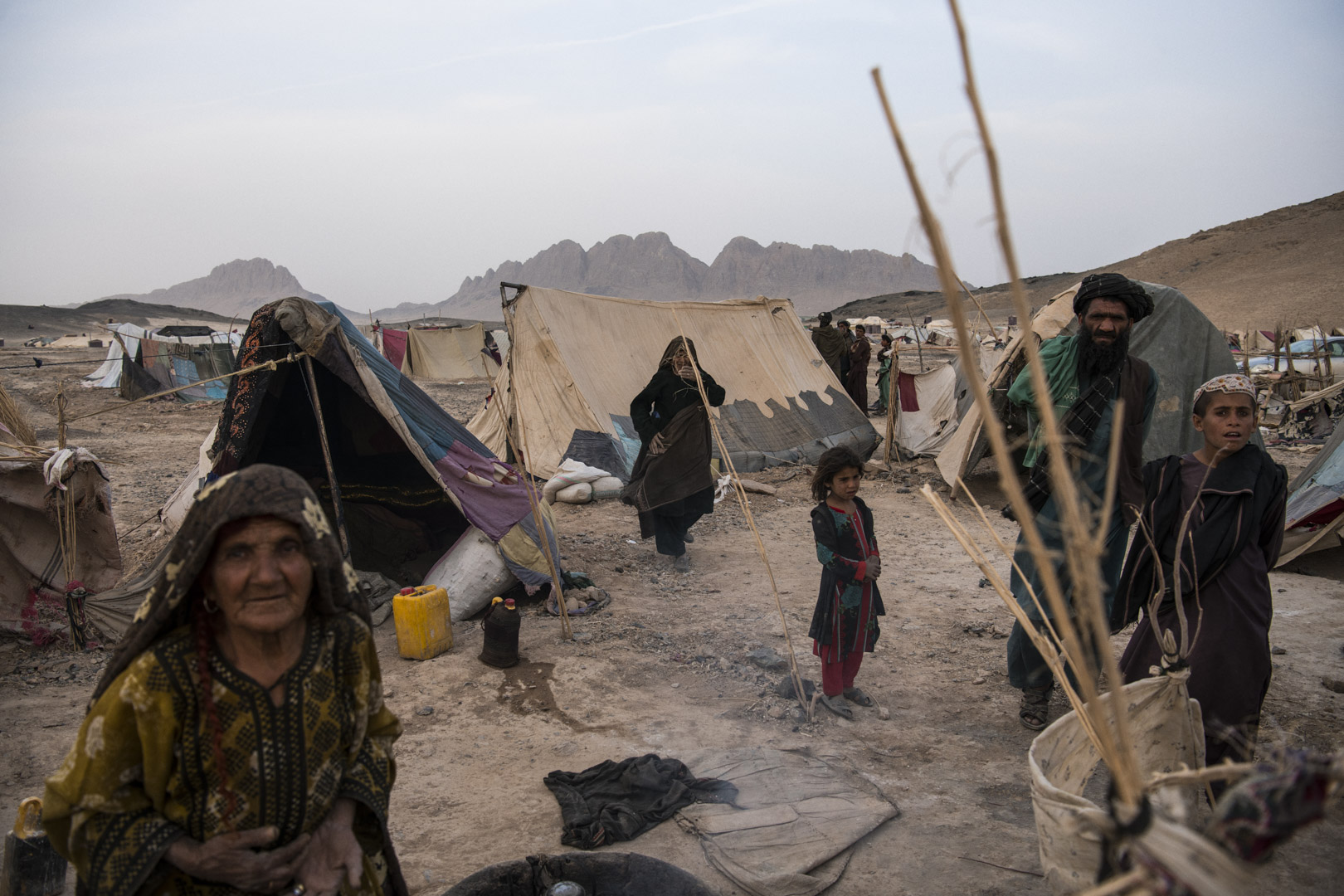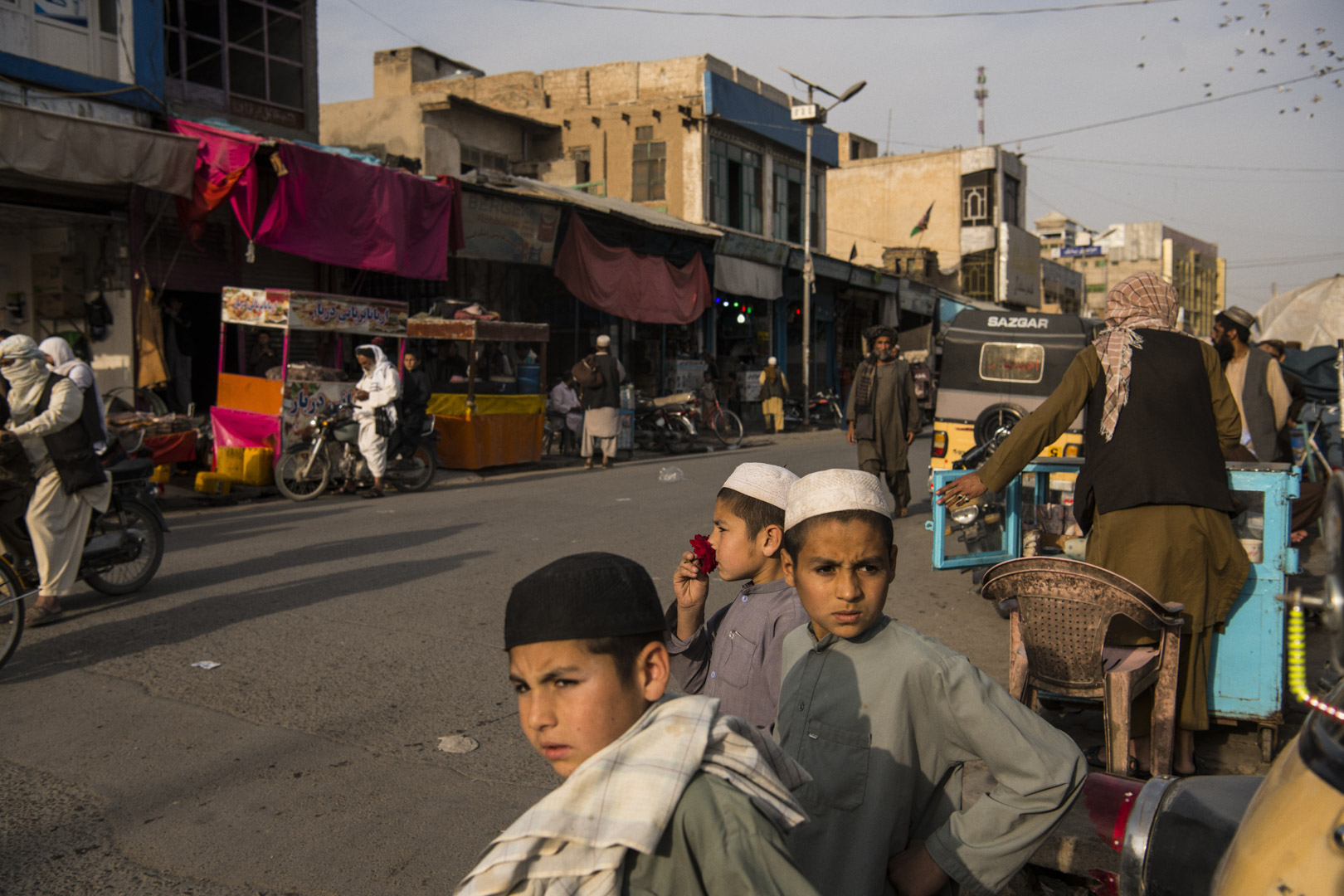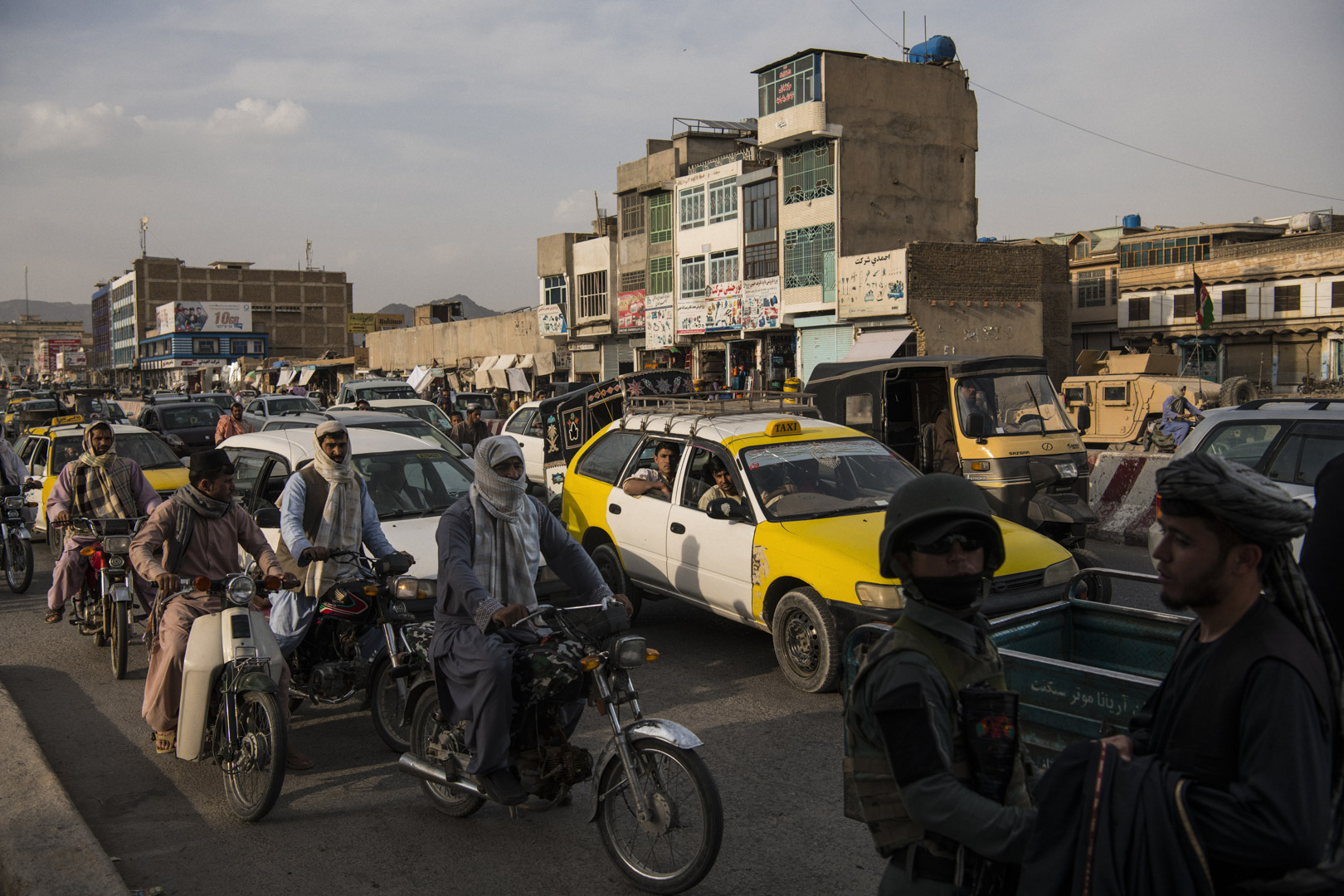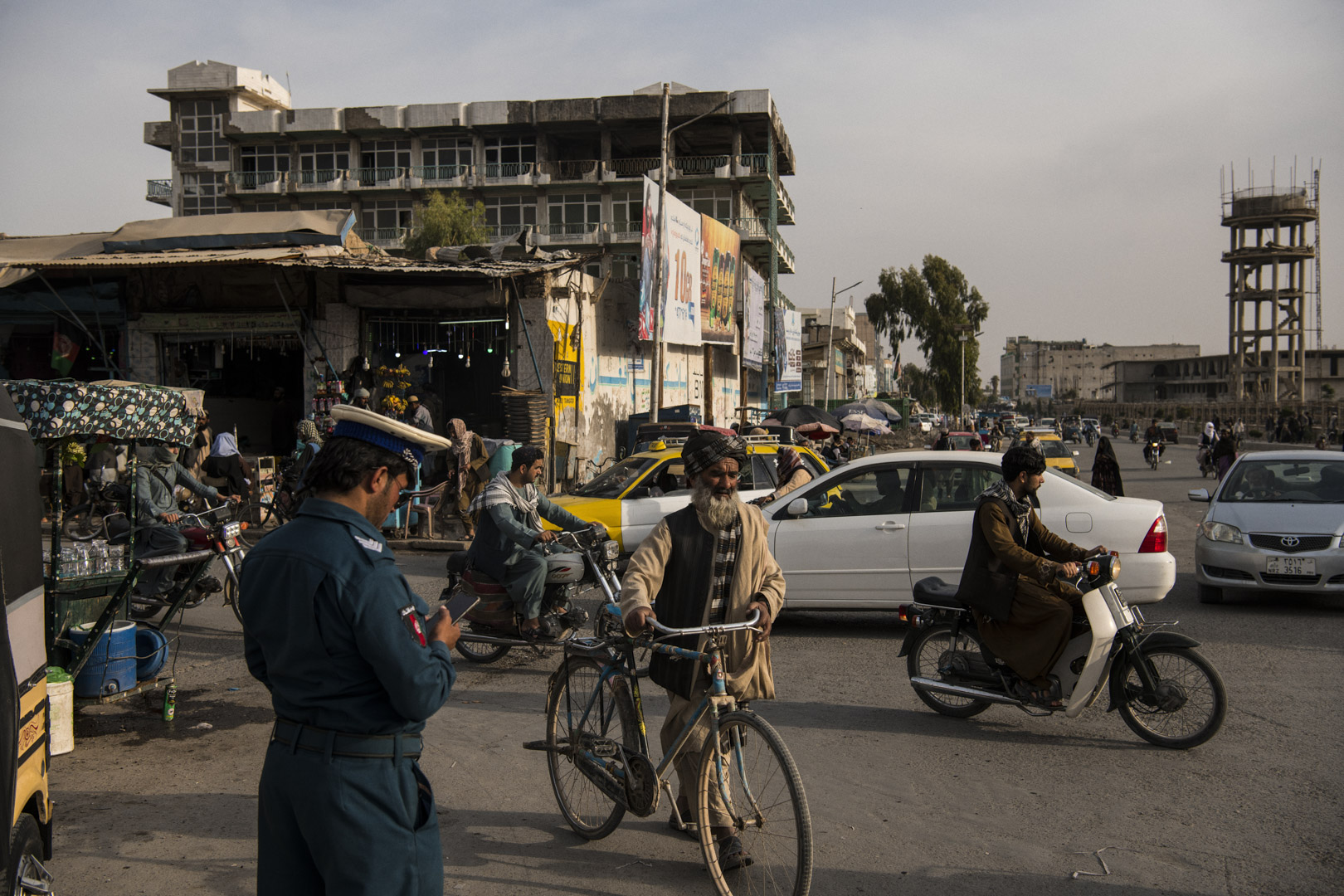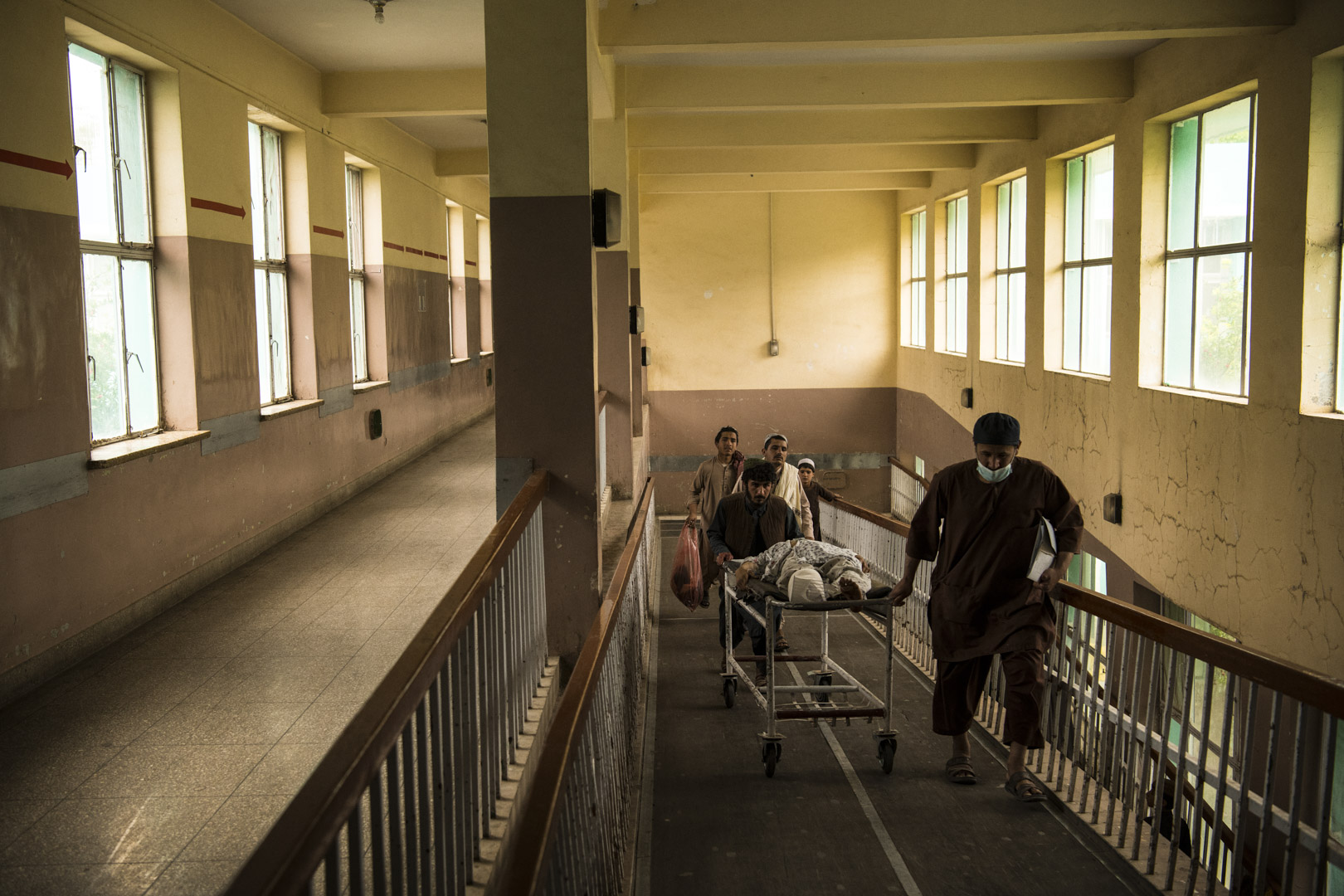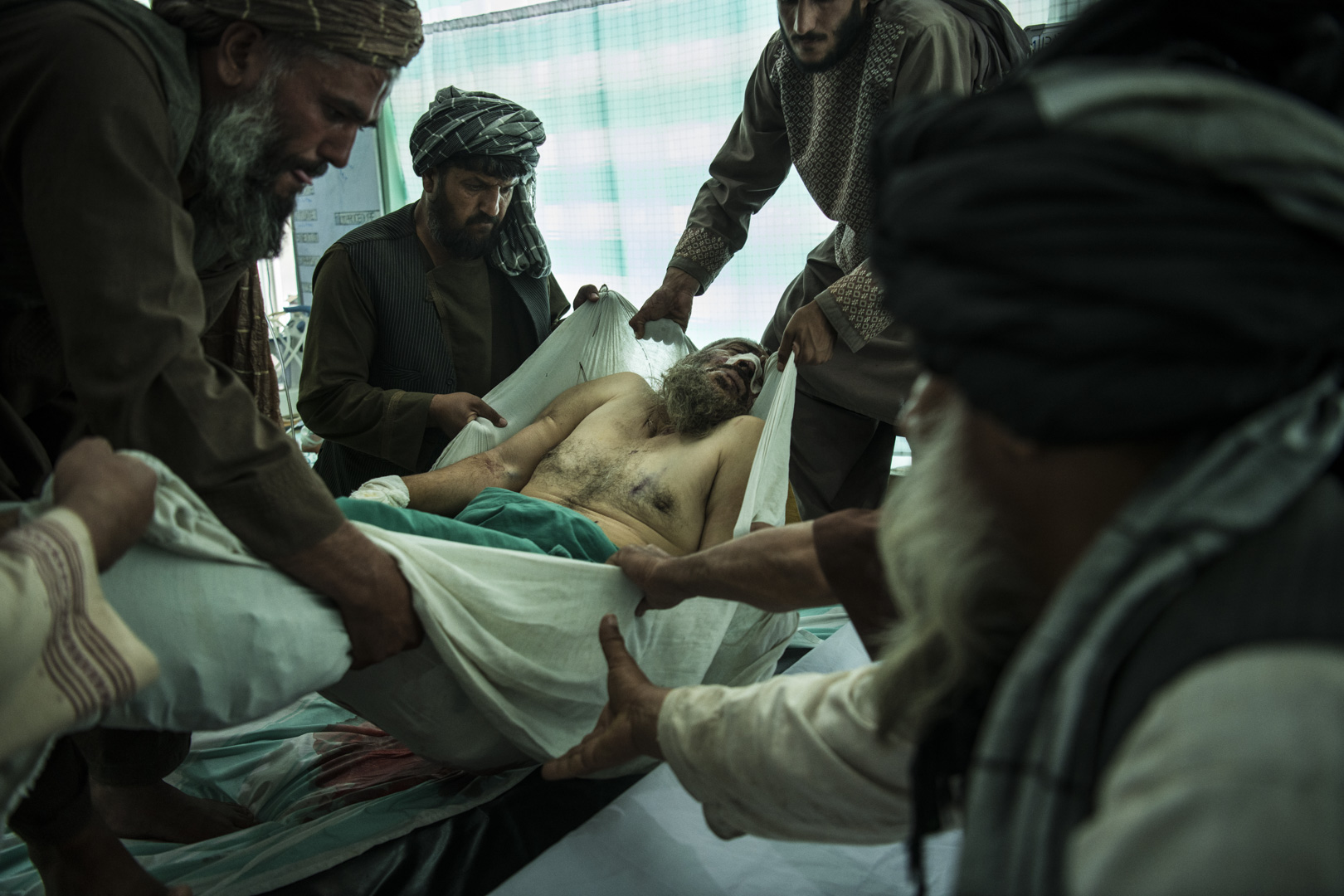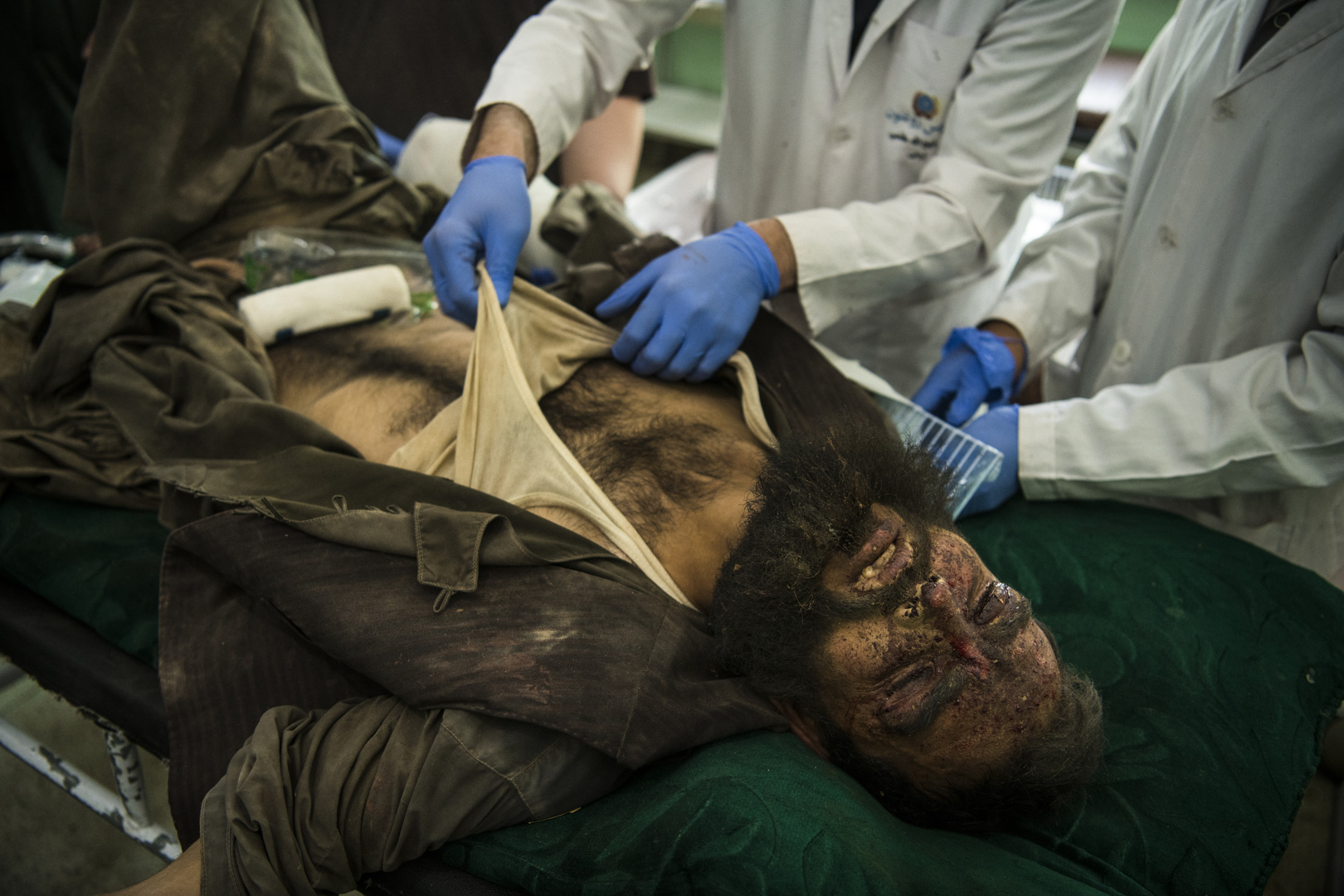In the hell of Kandahar, Afghanistan, 2021
As the 20th anniversary of the September 11, 2001 attacks and the U.S. intervention in Afghanistan is coming up, U.S. President Joe Biden confirmed in April 2021 that he will withdraw his troops before September 11, 2021, thus marking a decisive shift in the regional balance of power.
Pushed back with difficulty by American strikes, the Taliban have left thousands of explosive traps in their path. While foreign assistance is becoming more and more scarce, the Arghandab police and the Afghan army have to work alone to clear from mines the roads leading to the devastated villages. The population, 53% of which is born after 2001, is the first victim of these fighting. Families have to choose between fleeing at the risk of mines, or hiding at the risk of hunger and thirst in hastily built camps in the Afghan desert.
Andrew Quilty went to meet people and the Afghan forces for whom the 20 years of American occupation and fightings have cost the lives of 4,745 civilians and 68,000 military and police. They try to return to their villages destroyed by the Taliban, who have meticulously laid out traps that rival each other in macabre ingenuity.
In children’s bedrooms, in rebuilt walls, in bottles of kitchen oil and under every road, the region has at least one explosive every three meters, which a simple pressure or the passage of a car would trigger.
In a country where the poverty rate jumped from 34% to 55% between 2007 and 2017 and where 75% of the country’s public spending is financed by foreign assistance, the withdrawal of American troops who came to fight the terrorists without succeeding in eliminating them, is perceived as a humanitarian abandonment in a devastated area where danger threatens to come out at every movement.
Afghanistan, Kandahar, 13 april 2021,
Abdul Nafi (15) has been admitted to Mirwais regional hospital after he and an elderly neighbor he was helping, Haji Hayat Khan (55), triggered an improvised explosive device (IED). Like many residents of Arghandab, he and his family were forced to flee the fighting during the Taliban’s massive offensive in the fall of 2020. Abdul Nabi suffers from shrapnel wounds to his abdomen, chest and face, and has difficulty breathing.
Afghanistan, Kandahar, 10 april 2021,
Hezbollah, 26, a member of the Afghan National Police, has been victim of a Taliban concealed landmine while returning to his home for the first time in 4 months in the Arghandab district. Both his legs had to be amputated due to his injuries.
Afghanistan, Arghandab, 11 april 2021,
A national police convoy crosses a road recently cleared by Afghan army and police explosive ordnance disposal experts. Arghandab, taken in November 2020 during a major Taliban offensive, has been liberated in early April. Driven out by Afghan special forces on the ground and heavy aerial bombardment by both Afghans and Americans, the surviving Taliban fled to the northern districts of Kakrez and Shah Wali Kot.
Afghanistan, Arghandab, 11 april 2021,
Members of the Afghan National Security Forces take cover behind a Humvee as Afghan National Police explosive ordnance disposal technicians destroy about 20 improvised explosive devices (IEDs) found in the area.
Afghanistan, Arghandab, 11 april 2021,
Afghan National Police vehicles drive around one of the two main bridges connecting the center of Arghandab district in Kandahar province, and Kandahar City, to the rest of the district. Both bridges span the Arghandab River and were destroyed by Taliban fighters after fighting their way south of the river, which is only a few kilometers from Kandahar City.
Afghanistan, Kandahar, 12 april 2021,
Salih Mohammad’s family from Panjwai District is preparing to leave a refugee camp housing nearly 1,400 families displaced by fighting between government forces and the Taliban since fall 2020. Most of the people in the camp are from the neighboring Panjwai district, where fighting is still ongoing. The Danish non-governmental organization DACAAR has withdrawn the water tanks it had provided for two months, leaving the camp’s residents facing severe water shortages.
Afghanistan, Kandahar, 12 april 2021,
Salima, 45, on the right, from Panjwai district saw her husband, mother, father and three children die in the aerial bombing of their home. She is here with her niece Barat Gul (28, red veil in the center) and Malika, her 9-month-old daughter, in a refugee camp hosting nearly 1,400 families displaced by fighting between government forces and the Taliban since the fall of 2020.
Afghanistan, Kandahar, 12 april 2021,
Martyrs Square.
Afghanistan, Kandahar, 14 april 2021,
Mirwais Regional Hospital, Kandahar.
Afghanistan, Kandahar, 13 april 2021,
Haji Hayat Khan (55) died in the intensive care unit of the Mirwais Regional Hospital. Earlier in the day, he was seriously injured by an improvised explosive device along with Abdul Nafi (15), a young neighbor who had offered to help the elderly man to clean his house after several months of absence. Like many residents of Arghandab, he and his family had been forced to flee the fighting during the massive offensive launched by the Taliban in the fall of 2020. Hayat Khan had a leg and a hand amputated during surgery but succumbed to internal injuries that were not surgically treated.
Afghanistan, Kandahar, 13 april 2021
Faiz Mohammad (28) is being treated in the emergency department of Mirwais Regional Hospital after he was seriously injured by an improvised explosive device (IED) buried by Taliban fighters in the courtyard of his home in the neighboring district of Arghandab. Faiz Mohammad had been home for just five days after having to flee months of fighting due to the Taliban’s massive offensive in the fall of 2020.
